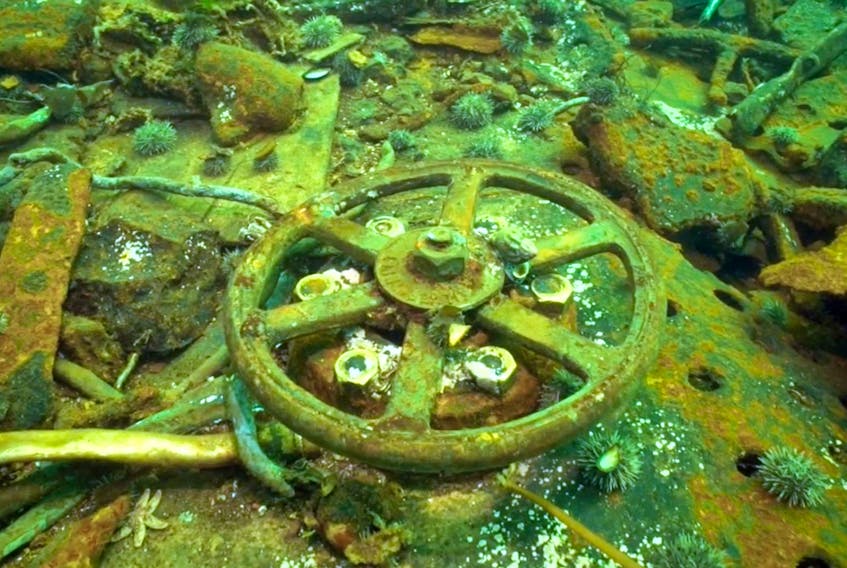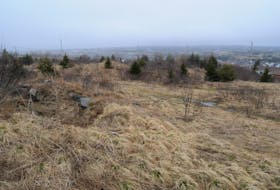Chris Harvey-Clark hopes HMS Raleigh’s underwater roller-coaster is out of commission for his dives near the shipwreck’s live ammunition over the next two weeks.
“The currents can be strong and a little unpredictable. It’s just a crazy site,” Harvey-Clark said of the area just off the coast of Point Amour, N.L.
“Last time I was there in 2012, in one dive we went from a bottom-water temperature in 35-feet of water of 57 degrees down to 34 degrees in a few minutes.”
But the Dalhousie University marine biologist is happy to return to the shipwreck site to collect samples to see if the historic munitions have had an effect on the marine environment.
HMS Raleigh ran aground on Aug. 8, 1922, a year after it was completed, and claimed the lives of 11 sailors. The British warship, sitting 10 storeys out of the water, served as an eyesore to the nearby community until it was blown up in 1926.
Harvey-Clark, joined by his Dalhousie colleague Alan Pinder, will manoeuvre around a debris field — roughly the size of two football fields and littered with live munition — and collect samples of algae, sea urchins, crabs, fish and bottom debris, such as sand and mud.
“It’s like landing in an underwater metal scrap yard down there, scattered all along the bottom,” Harvey-Clark said of the 178-metre long by 121-metre wide site.

HMS Raleigh had many eight-inch shells on-board, including cannon shells weighing roughly 136 kilograms and full of TNT, Harvey-Clarke said.
“Toluene is a fairly nasty organic solvent, so we’re wondering if we may find any in the bottom debris,” he said.
“We don’t really know what happened, if anything is present in the marine environment or if it’s been dispersed.”
Harvey-Clark plans to do six major collections at different positions during his two weeks at the site.
He will produce a report on his findings and hopes to create a 2D mosaic map of the wreck. He’ll also pass along information on the sediments and animals to graduate student John McCallum for his PhD thesis.
While Harvey-Clark has been trained to recognize the different munitions, he won’t be getting too close.
“The big thing is these munitions have been underwater for 90 years,” he said.
“So in some cases, they will deteriorate to where they’re falling apart, but some munition, the ignition systems on them may have become more sensitive with time underwater.”
Most of Harvey-Clark’s dives will take place in the morning, as the currents become stronger and unpredictable later in the day.
“Safety is everything because you can bump into (the munitions),” he said.
“You can have a two-metre swell and when it gets that rough you’re probably better off out of the water, but we’re prepared for the conditions.”
While this will be Harvey-Clark’s second visit to the site, it will most likely be his last.
“The history of Raleigh is really fascinating and that’s part of what keeps pulling me back to the site, but it’s a big ocean and there’s a lot of neat things to do out there,” he said, adding he’s not normally a wreck diver.
But if Harvey-Clark changes his mind, he believes the British warship’s munitions will still be there for him to see.
“Personally, I don’t think we’ll ever have a munitions-free site at the Raleigh,” he said.
“The size and scope of the wreck, it could be another 50 years of annual visits and you wouldn’t get all the shells on it.”
RELATED: Pirates, treasure and shipwrecks among the mysteries of this disappearing island in the Bay of Fundy









